 |
 |
| 'IWRM Guidelines at River Basin Level' |
|
6th March 2009, at The Launching Ceremony of the Guidelines, |
|
Presentation by Mr. Shinsuke Ota (former Executive Vice President of JWA) |
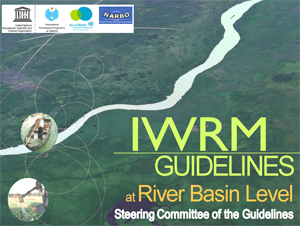 |
|
His Imperial Highness the Crown Prince of Japan, Mr. Koichiro Matsuura, Director General of UNESCO, distinguished guests, ladies and gentlemen. Dr. Eugene Stahkiv and I have been co-chairing the Steering Committee of the Guidelines. I'd like to introduce the contents and the intentions of the guidelines presented to you today. |
 |
Please look at this picture. Where does water come from and where does it go? Who uses the water and how? Addressing water problems is a synonym to addressing people issues for improving their livelihoods. |
|
 |
Water has many uses, including hydropower, agriculture and domestic water supply, and the interests and concerns of users vary greatly due to differences in their perception of water. For example, farmers’ primary concern is not water but increasing food production, so they want water in accordance with crops they grow. Water has many uses, including hydropower, agriculture and domestic water supply, and the interests and concerns of users vary greatly due to differences in their perception of water. For example, farmers’ primary concern is not water but increasing food production, so they want water in accordance with crops they grow. |
|
 |
Suppose, there is a river with 20 units of available water, but there are 3 stakeholders and each want 10 . What can we do? One possible solution is to increase available water resources by such means as building a reservoir. This way, each stakeholder can use 10 units respectively, but it will require time and money, and much caution for the environment. Another possible solution is to share the existing 20 units among the 3 by making compromises. They may not be 100% satisfied but can still gain a certain level of benefit. There are many other solutions. What is important for IWRM practitioners is to explore and identify suitable and doable solutions for their basin. The guidelines offer you wide range of case studies with many important keys imbedded in them. |
|
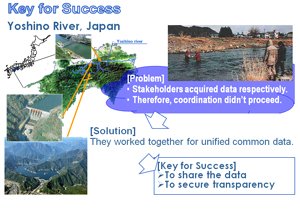 |
Here is a case of Yoshino River in Japan. In the process of building these facilities, stakeholders in the basin faced many difficulties and conflicts. However, they managed to overcome such challenges one by one. One of their keys for success was to share data among stakeholders. Stakeholders disclosed their own data and a common information base for the basin was produced. This eliminated their suspicions against one another and promoted smooth coordination. |
|
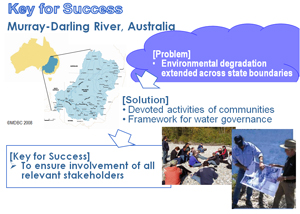 |
Here is another case, Murray-Darling Basin in Australia. The keys extracted from these two cases, “information sharing” and “stakeholder participation”, are essential principles and apply to every successful case of IWRM. These are the ‘Keys for Success’, the core of the Guidelines. |
|
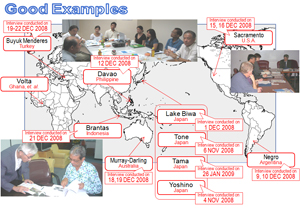 |
In order to collect Keys for Success demonstrated in river basins worldwide, the taskforce of the Guidelines visited several basins and conducted interviews with the local resource persons. The information was compiled into Good Examples. |
|
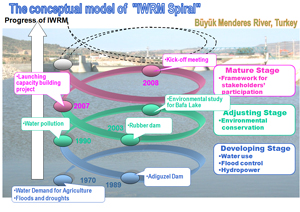 |
Looking into a history of a basin allows you to see that water resources management evolved according to the changing situations in the basin. IWRM is a process towards better water management and is a process of gradually expanding the circle of stakeholders. The Guidelines introduce the ‘Spiral Model’ as an illustration of this process. Good Example from Buyuk Menderes River in Turkey, contributed by Turkish colleagues, is a typical case. The spiral has been moving up toward the better water resources management. Later, Dr. Husseyin Gundogdu will explain this in detail. |
|
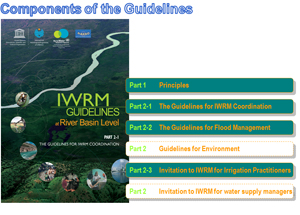 |
We prepared the Guidelines in 4 parts. Part 1 provides basic principles of IWRM. Part 2-1 is for IWRM Coordination and Part 2-2 is for Flood Management. Part 2-3 is prepared from the perspective of irrigation practitioners as representatives of water users. We plan to produce sequel to Part 2 from other perspectives also. |
|
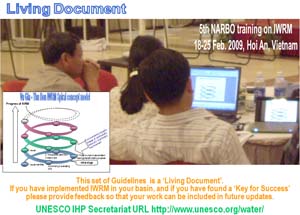 |
I would like to emphasize that it is a ‘Living Document’. We have already started using these materials in workshops and we will be working on improving the guidelines at the same time. The Guidelines also have to evolve. |
|
 |
Please take the Guidelines in your hands, work with them and see how they can benefit you. And also, please join us in making it even better. Thank you for your attention. | |
 |